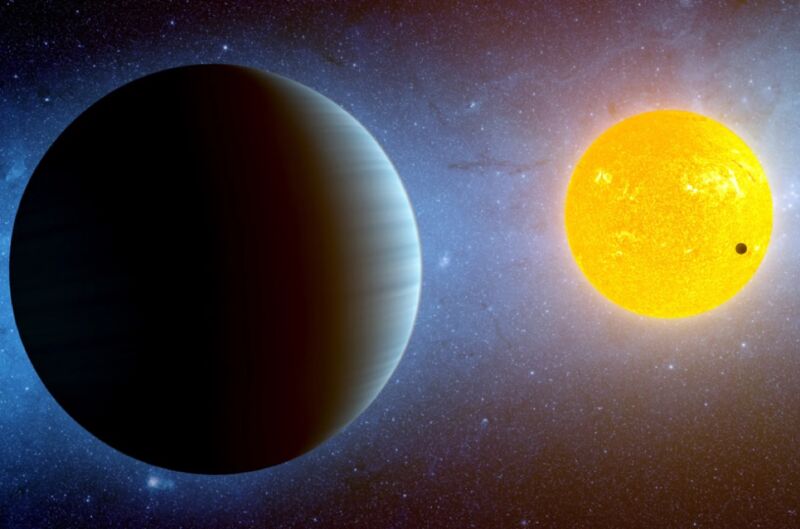
Astronomers have discovered an unusual Earth-sized exoplanet they believe has a hemisphere of molten lava, with its other hemisphere tidally locked in perpetual darkness. Co-authors and study leaders Benjamin Capistrant (University of Florida) and Melinda Soares-Furtado (University of Wisconsin-Madison) presented the details yesterday at a meeting of the American Astronomical Society in New Orleans. An associated paper has just been published in The Astronomical Journal. Another paper published today in the journal Astronomy and Astrophysics by a different group described the discovery of a rare small, cold exoplanet with a massive outer companion 100 times the mass of Jupiter.
As previously reported, thanks to the massive trove of exoplanets discovered by the Kepler mission, we now have a good idea of what kinds of planets are out there, where they orbit, and how common the different types are. What we lack is a good sense of what that implies in terms of the conditions on the planets themselves. Kepler can tell us how big a planet is, but it doesn’t know what the planet is made of. And planets in the “habitable zone” around stars could be consistent with anything from a blazing hell to a frozen rock.
The Transiting Exoplanet Survey Satellite (TESS) was launched with the intention of helping us figure out what exoplanets are actually like. TESS is designed to identify planets orbiting bright stars relatively close to Earth, conditions that should allow follow-up observations to figure out their compositions and potentially those of their atmospheres.
Both Kepler and TESS identify planets using what’s called the transit method. This works for systems in which the planets orbit in a plane that takes them between their host star and Earth. As this occurs, the planet blocks a small fraction of the starlight that we see from Earth (or nearby orbits). If these dips in light occur with regularity, they’re diagnostic of something orbiting the star.
This tells us something about the planet. The frequency of the dips in the star’s light tells us how long an orbit takes, which tells us how far the planet is from its host star. That, combined with the host star’s brightness, tells us how much incoming light the planet receives, which will influence its temperature. (The range of distances at which temperatures are consistent with liquid water is called the habitable zone.) And we can use that, along with how much light is being blocked, to figure out how big the planet is.
But to really understand other planets and their potential to support life, we have to understand what they’re made of and what their atmosphere looks like. While TESS doesn’t answer those questions, it’s designed to find planets with other instruments that could answer them.
https://arstechnica.com/?p=1995339

